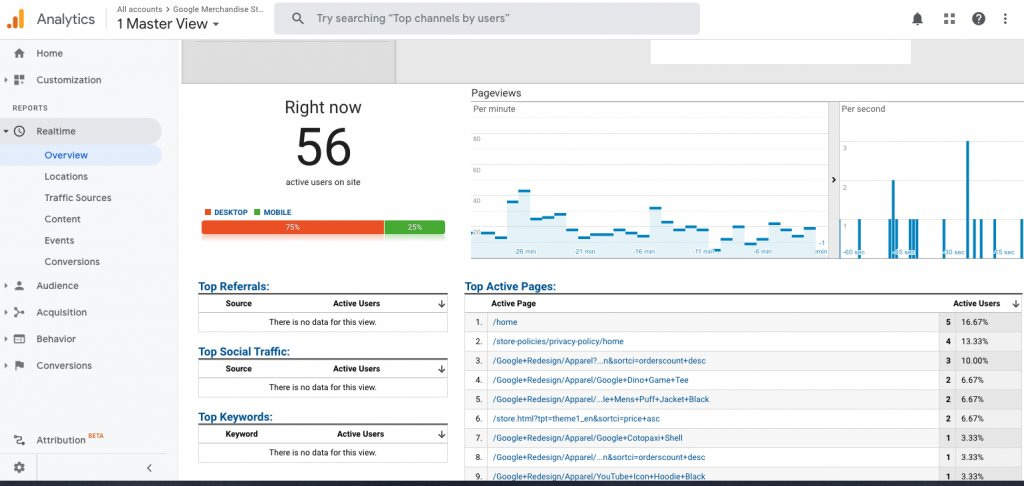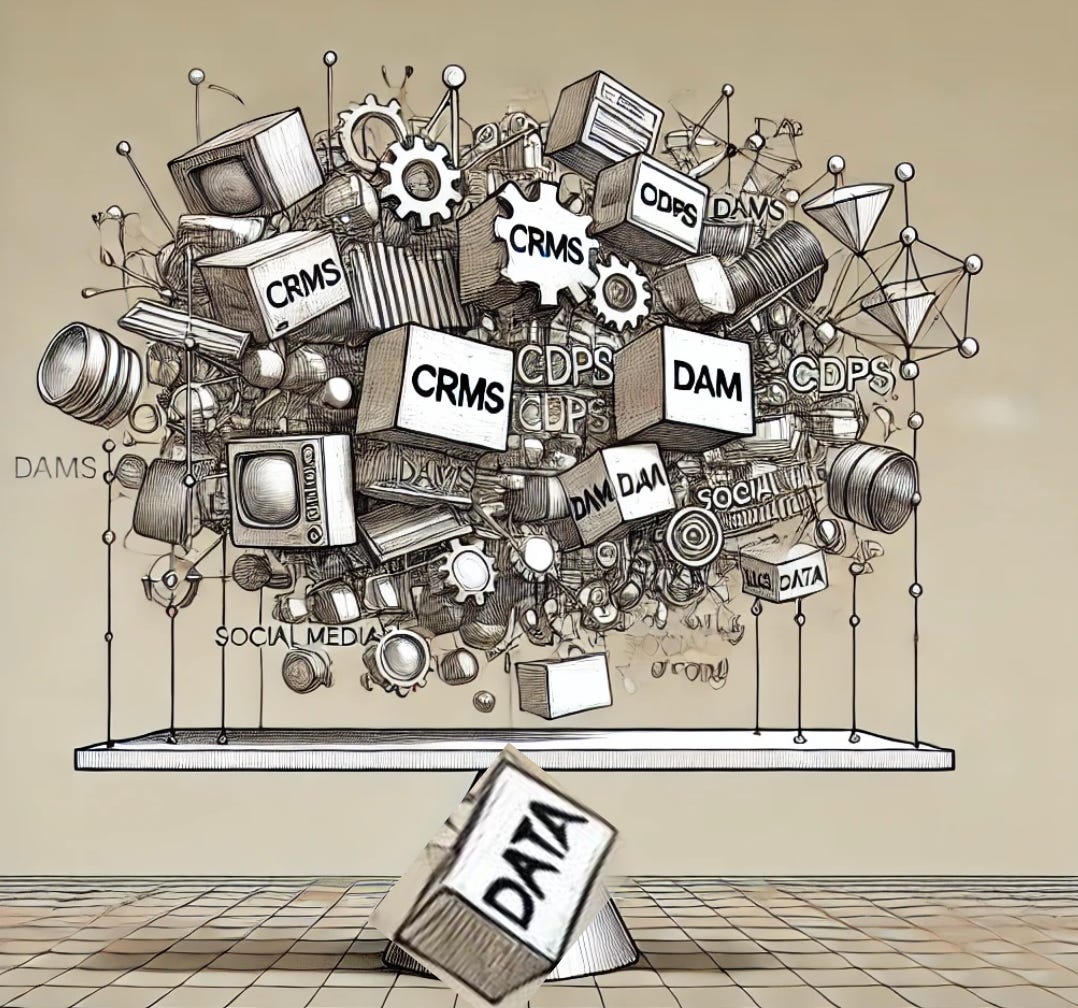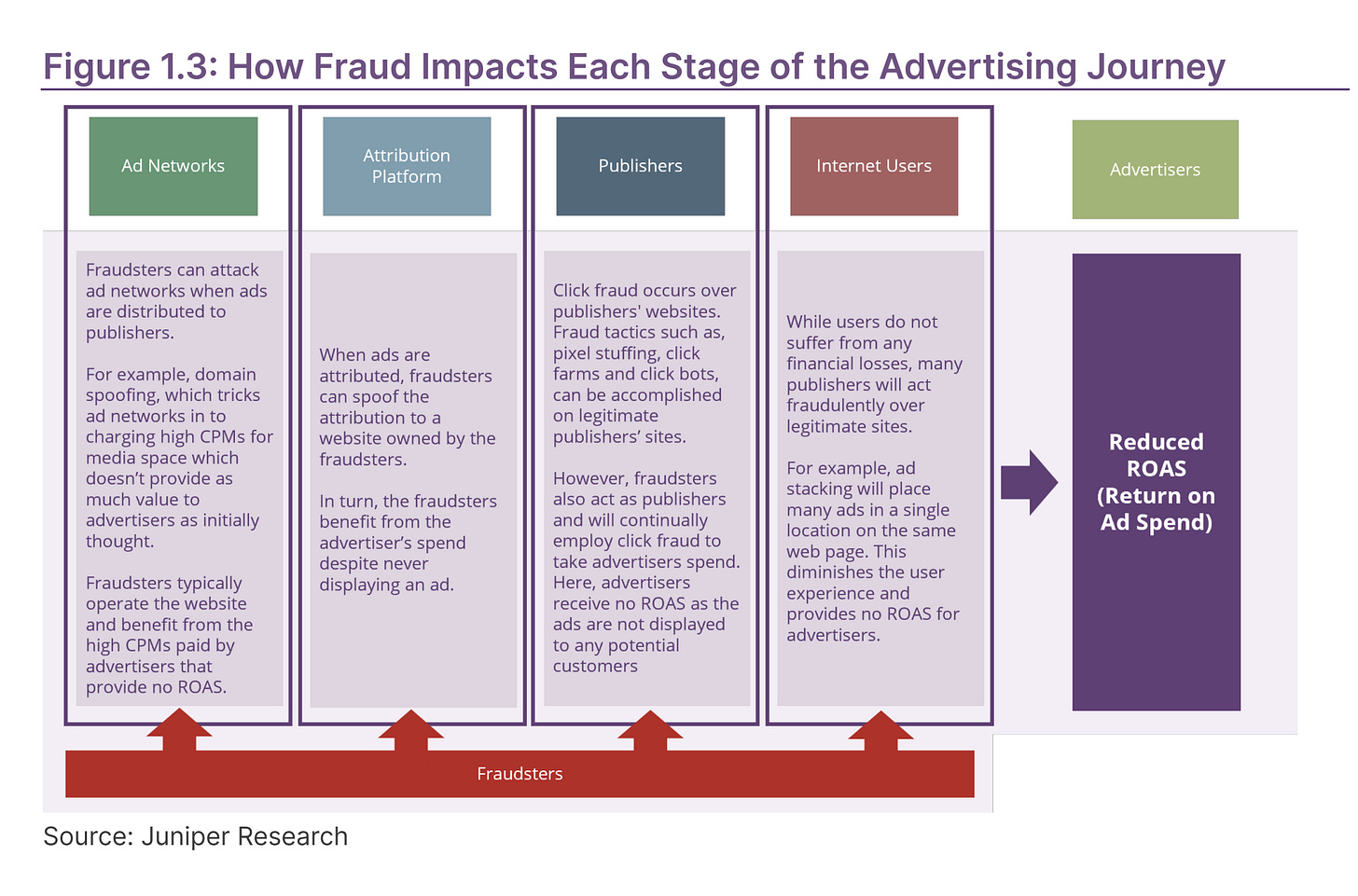Marketing's $100 Billion Dollar Mistake: Fraud in Digital Channels
"I want extremely granular data" *monkey's paw curls*
We’re culturally addicted to numbers.
We tell stories about how clever technology companies are about ad placement—but has our commerce really gotten *that* much better with more data?
We’ve seen generations of tech founders retire to lavish wealth without ever turning a profit because their product was just so valuable.
Sure, supply chains and manufacturing are more efficient, but are we really getting sales results so good that we can value digital marketing companies at over 10% of the US GDP?
What if it’s all a lie?
In this article, we’ll uncover just how widespread ad fraud truly is, why it’s easy to be misled by strong top-of-funnel metrics, and how marketers can approach their campaigns with a critical eye to avoid wasting resources.
Marketing has always been a squishy ‘science’
(If you’re willing to call it a science at all1)
Since the early days of pamphleteering2 to spread new ideas, products, or services, marketers immediately wanted more—More reach, more targeting, more granular understanding of who received their material.
It sucks that every leader will ask for hard numbers and marketers can’t deliver. CFOs don’t have to worry about explaining ‘cumulative return effects’ of spending over time when the bank account keeps growing.
Marketer’s just don’t have the same visibility.
“Half the money I spend on advertising is wasted; the trouble is I don’t know which half.”
—John Wanamaker, pioneer of modern marketing (1838-1922)
The Digital Gates Open
But that ‘squishy’ feelings- and experience-based marketing was swept under the rug as soon as digital channels opened up.
Without fallible humans to tell you—or worse, fill out more surveys—about how they came to purchase your product, you can get pinpoint accuracy on where someone came from.
We’re no longer satisfied by “oh I think I saw an ad on the tube for drowsy medicine and I did notice that I was pretty tired”.
Now you get “User q3123413 spent 0:33 on webpage Aq34.09 on a mobile device, then spend 1:34 on checkout funnel IHE395.75…”
And we have a very well-measured3 pathway through the customer journey.
As is currently advertised on B2BMarketing.net,
Well, fast forward 93 years (1922 to 2015) and it’s very sad that John Wanamaker isn’t alive and with us today. He would have his answers, as many of us do. He would be able to accurately and precisely measure the ROI of practically every single activity and dollar spent.
The Monkey’s Paw
But like the story of The Monkey’s Paw, every wish granted comes at a terrible cost.
Digital marketing is built on trust in data.
The executive teams’ instincts are developed from reading dashboards that reflect assumptions from the data team that come from…..whatever. But at the end of the day, all insights come from data!
Marketers rely on analytics to gauge performance, allocate budgets, and make strategic decisions.
We now have a tsunami of extremely precise data—the dream of marketers past.
But it all comes at a cost.
But what happens when the data is a lie?
Ad fraud, a beautiful lie where good and bad marketers look the same, siphons billions of dollars from advertisers’ pockets each year.
Its scale is actually staggering. And if we claim to be ‘data-driven’, then the practices we commonly accept in marketing might be no better than pigeons bobbing their heads for food.
How Big is the Problem? Bigger Than You Think
The numbers don’t lie—except when they do.
Global losses from ad fraud are over 1 of 5 dollars on ad spend!
Over $100 billion annually is lost, making it one of the most lucrative criminal enterprises on the planet.
Shockingly, this fraud dwarfs the GDP of many countries.
At each stage of the ad buying journey, money pours out of the sales funnel4.
Here’s how it breaks down:
Over 20% of programmatic ad spend is estimated to be fraudulent.
Mobile ad fraud rates can exceed 30%, driven by click farms and fake installs.
In some high-risk verticals, such as gaming and e-commerce, more than 40% of clicks may come from bots or malicious actors.
FouAnalytics estimates 20-30% of digital ads could be sent to “Made for Advertising” sites that do not provide real impressions.
Despite these figures, ad fraud often flies under the radar because its impact is fragmented—and because the numbers might lead to promotions, they aren’t usually very well investigated.
Beautiful lies go unexamined
When marketers see a surge in top-of-funnel metrics—clicks, impressions, app installs—it’s easy to celebrate.
It’s fun to show it to your boss and get a raise.
After all, more activity must mean more engagement, right?
Unfortunately, no.
Ad fraud capitalizes on our reliance on metrics by targeting the most visible stages of the funnel. Here’s what often happens:
Skyrocketing Clicks with No Conversion: Fraud actors use bots (or people—see below) to click on ads, creating the illusion of high engagement. But these clicks don’t translate into purchases or deeper interactions.
Impressions That Don’t Exist: Techniques like pixel stuffing (hiding ads in 1x1-pixel spaces) inflate impression numbers while providing no real value.
Fake App Installs: Fraudsters simulate mobile app downloads, leaving marketers with a sea of inactive users and skewed cost-per-acquisition metrics.
Marketers waste resources optimizing campaigns based on false signals, while legitimate opportunities are neglected.
Over reliance on numbers alone turns us into superstitious pigeons. (I’m begging you to read the paper)
Why You Should Question Everything
The first step to combating ad fraud is skepticism.
Marketers should approach any unusually high top-of-funnel numbers with a critical eye and dig deeper into the data.
Red Flags to Watch For:
Disproportionate Metrics: Are click-through rates far higher than average but conversion rates stagnant? This mismatch often points to fraud.
Anomalies in Traffic Sources: Are you seeing a sudden influx of traffic from unknown websites or geographies that don’t align with your target audience?
Unrealistic ROI Claims: Beware of ad networks or platforms that promise astonishing results without transparency about their methods.
C’mon—if it looks too good to be true, it is.
What Can Marketers Do? Start with These Steps
Audit Your Campaigns—Don’t just believe what makes you look good
Scrutinize traffic sources and user behavior patterns. Look for unusually short session times or a lack of follow-through on CTAs.Prioritize Down-Funnel Metrics
Focus on conversions, repeat purchases, or other mid-to-bottom funnel behaviors as your true indicators of success. These are far harder for fraudsters to fake.Test Credibility
Run small-budget tests with new ad partners to verify the quality of traffic before committing significant resources.
Closing Thoughts: Trust, But Verify
Ad fraud is a multi-billion-dollar industry designed to deceive.
While top-of-funnel metrics can be exciting, they often conceal a harsh reality: you’re paying for ghosts.
Instead of relying solely on surface-level analytics, shift your focus to deeper, longer-term performance indicators.
By questioning your data and prioritizing meaningful outcomes, you can protect your ad spend and ensure your campaigns are as impactful as possible.
Remember: Until it’s money on the balance sheet, it’s not real!
I’m a Dilthey-ist.
Wilhelm Dilthey, a 19th-century German philosopher and historian, argued that the methods of natural sciences (even ones as ‘basic’ as statistics and the central limit thorem) were ill-suited to understanding human and social phenomena.
E.g. just because you can fit a 4th order polynomial to the rate of chemical reactions doesn’t mean that we can meaningfully fit such nuanced curves to human phenomena
For Dilthey, the human experience—shaped by culture, emotion, and innate predispositions—was too complex to be reduced to the kind of cause-and-effect relationships that work so well in physics or chemistry.
Instead, he proposed a distinction between Naturwissenschaften (natural sciences) and Geisteswissenschaften (human sciences), emphasizing that the latter required interpretation and understanding, not just measurement.
This divide is particularly important in marketing, a field where the impulse to impose hard numbers often clashes with the squishy, human-centered reality of business.
Marketers face constant pressure to prove ROI, often relying on statistics and analytics that may fail to capture the nuanced interplay of brand perception, cultural relevance, and emotional resonance. (Not to say that bad marketers don’t use these exact same excuses to hide their poor performance either! It’s a tough nut to crack)
Metrics like impressions or click-through rates, much like the mathematical abstractions Dilthey criticized, risk oversimplifying the messy reality of human behavior—even when you get beyond the falsification of intentional ad fraud.
Trusting these ‘soft’ numbers as the ultimate arbiters of success (rather than actual results) can lead to a false sense of control rather than more actual success.
Pamphlets were the 18th century version of social media—a viral craze!
But the hand-to-hand (and then hand-to-hand again if it was interesting) spread meant that the creators not only couldn’t guess how many eyeballs were on their work, they also didn’t know what the audience was that read it!
more like sales sieve












I spent 15 years in advertising. This is all excellent. The numbers are often garbage and, even worse, most of the industry doesn't know what to do with them if they weren't. The experiments are poorly controlled, don't even have the limited value of statistical significance, and are basically just used to justify whatever the CMO or VP wanted to do anyway.
Awesome work man. Solid research.